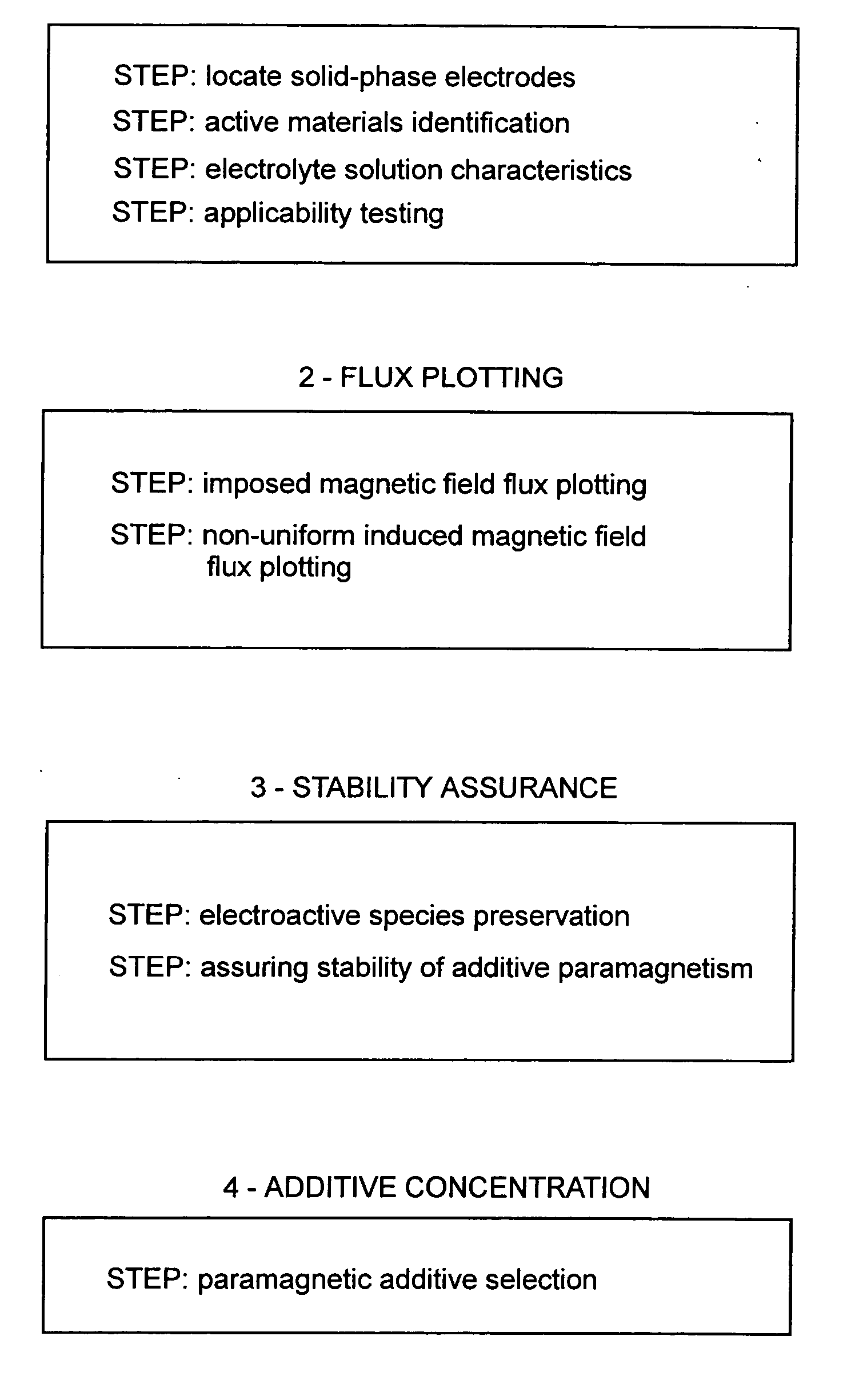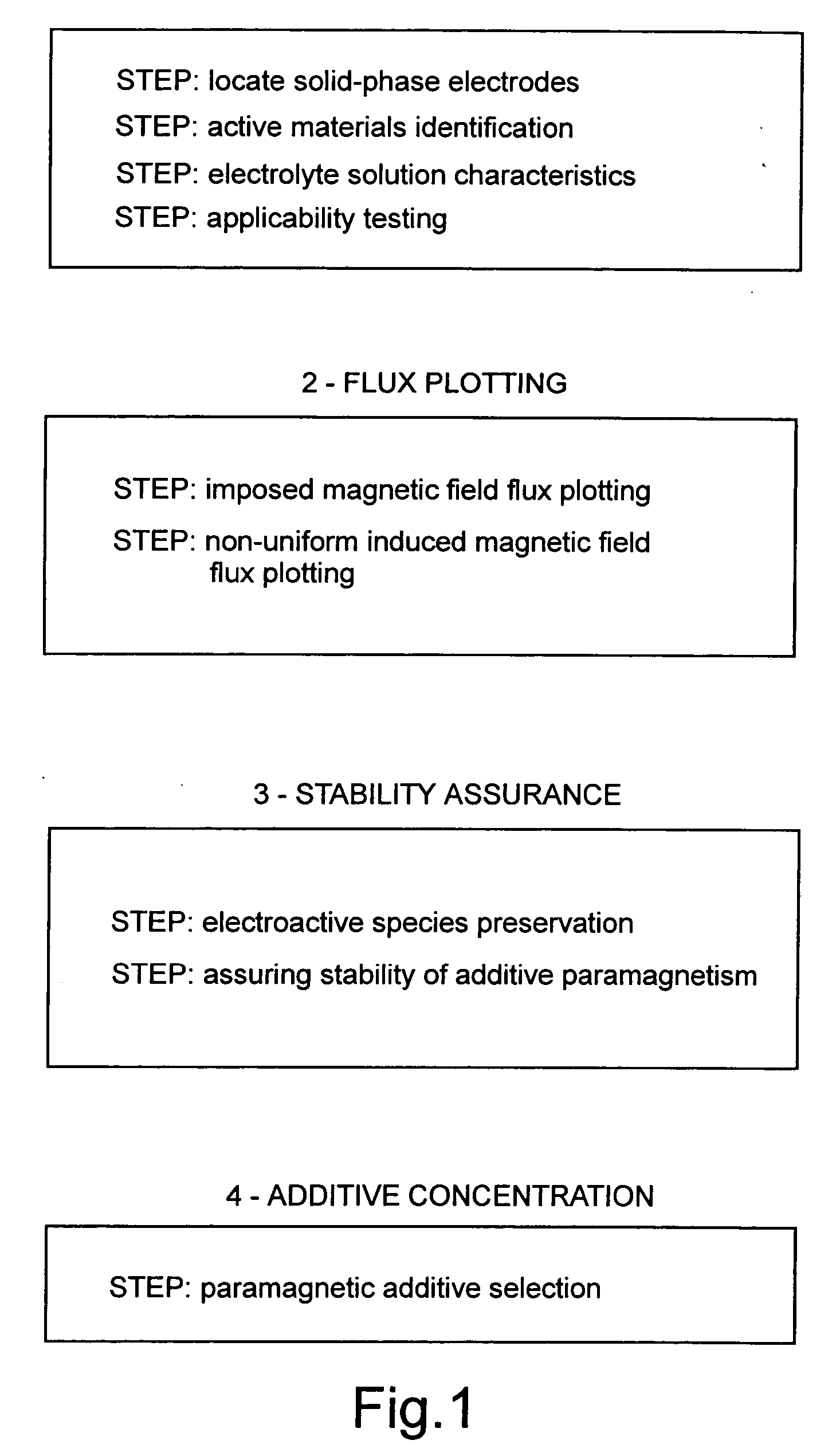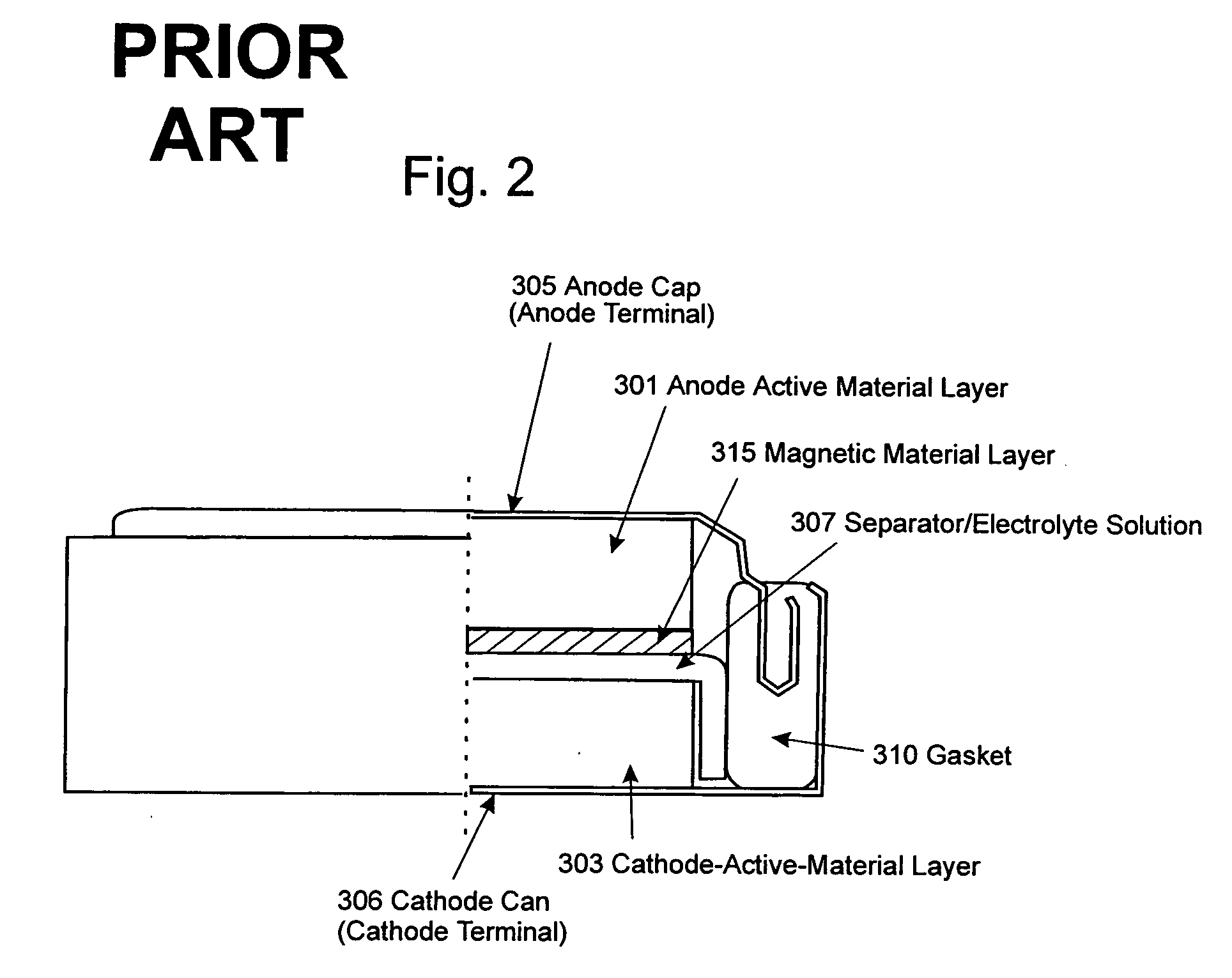Paramagnetic additive method of optimizing cell electrohydrodynamics
a cell electrohydrodynamic and additive technology, applied in the field of paramagnetic additive method of optimizing cell electrohydrodynamics, can solve the problem that potential users of the method are apt to doubt its real world value, and achieve the effect of improving the magnetic enhancement
- Summary
- Abstract
- Description
- Claims
- Application Information
AI Technical Summary
Benefits of technology
Problems solved by technology
Method used
Image
Examples
Embodiment Construction
[0042] With reference first to the FIG. 1 block chart, it assists fixing ideas so as to procure systematization of—without necessarily imposing a chronological sequence upon—definite method steps set forth to enable artisans of an appropriate level of skill, in the area of practical magnetoelectrolysis, to both extend the range of particular electrochemical cells to which this new paramagnetic additive method for optimizing magnetically convectable aqueous electrolyte solutions will be known to apply, and extend the range of inorganic paramagnetic chemicals likely to be at once envisaged, and specifically named, as desirably used additives for practicing the method.
[0043] Stage 1, cell analysis, encompasses acquiring confirmation of qualifying and informative basic matters that should not be neglected when contemplating changing the electrolyte solution design for a given magnetically enhanced cell.
[0044] Locating in the cell a solid-phase anode and counterpart solid-phase cathode...
PUM
| Property | Measurement | Unit |
|---|---|---|
| Molar density | aaaaa | aaaaa |
| Molar density | aaaaa | aaaaa |
| Paramagnetism | aaaaa | aaaaa |
Abstract
Description
Claims
Application Information
 Login to View More
Login to View More - R&D
- Intellectual Property
- Life Sciences
- Materials
- Tech Scout
- Unparalleled Data Quality
- Higher Quality Content
- 60% Fewer Hallucinations
Browse by: Latest US Patents, China's latest patents, Technical Efficacy Thesaurus, Application Domain, Technology Topic, Popular Technical Reports.
© 2025 PatSnap. All rights reserved.Legal|Privacy policy|Modern Slavery Act Transparency Statement|Sitemap|About US| Contact US: help@patsnap.com



